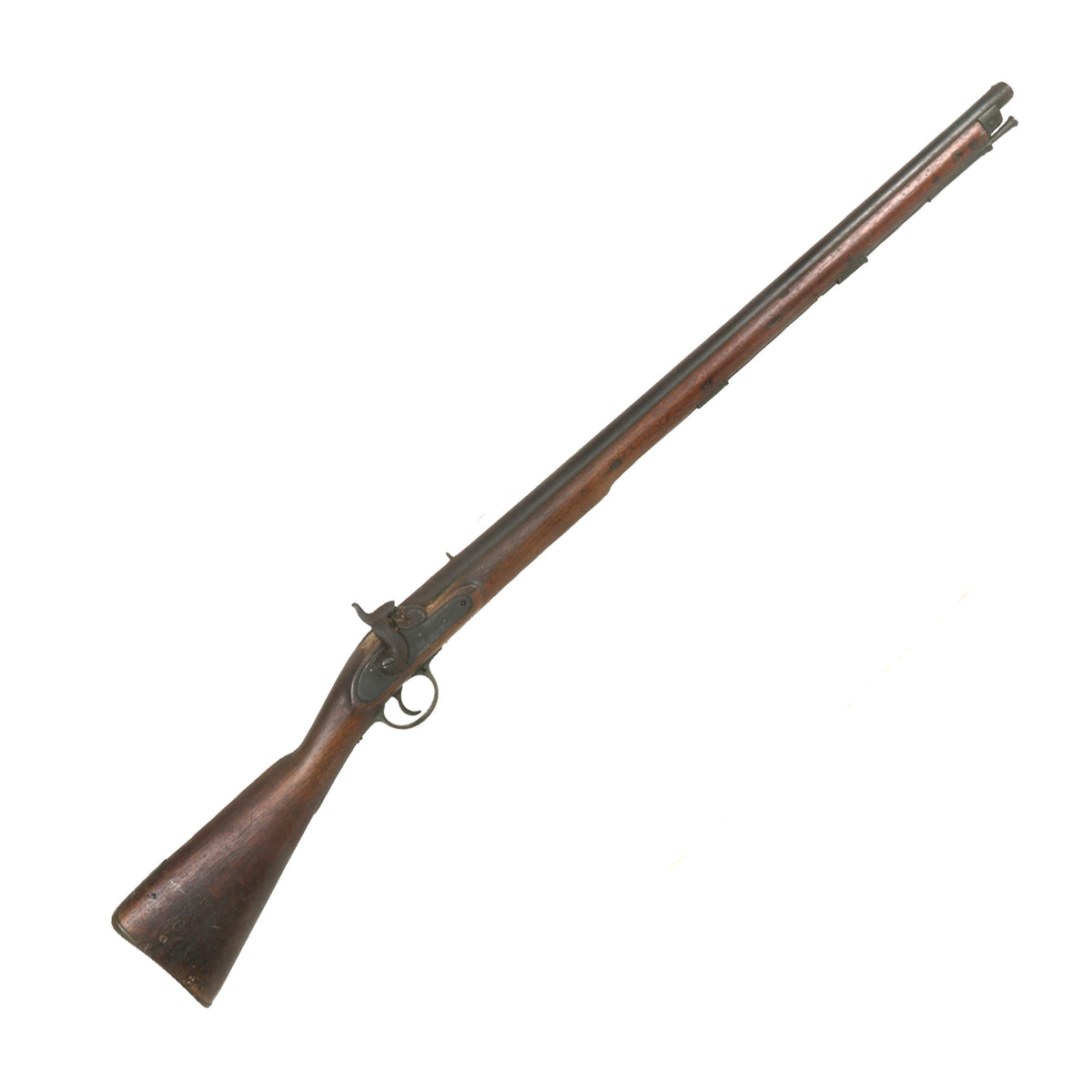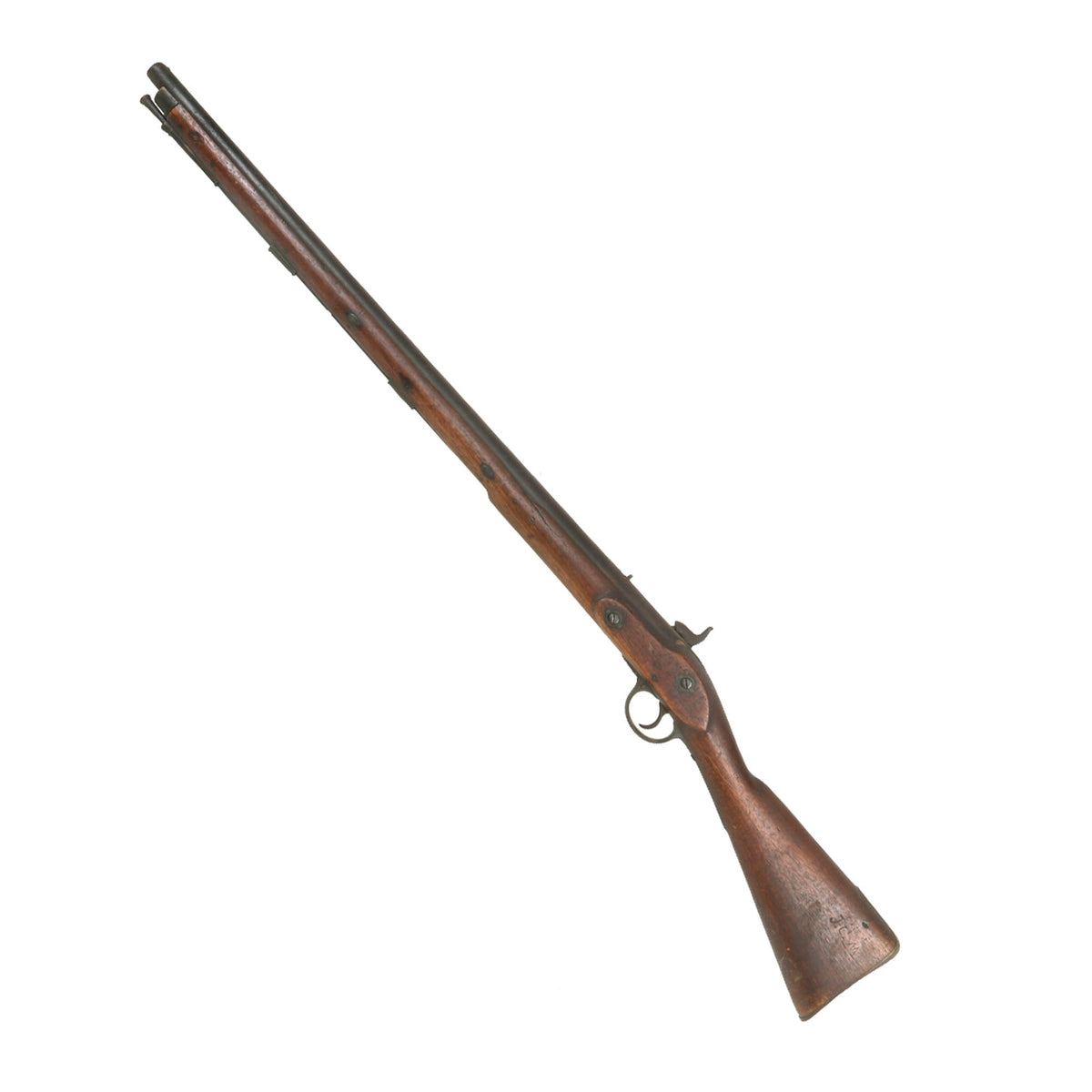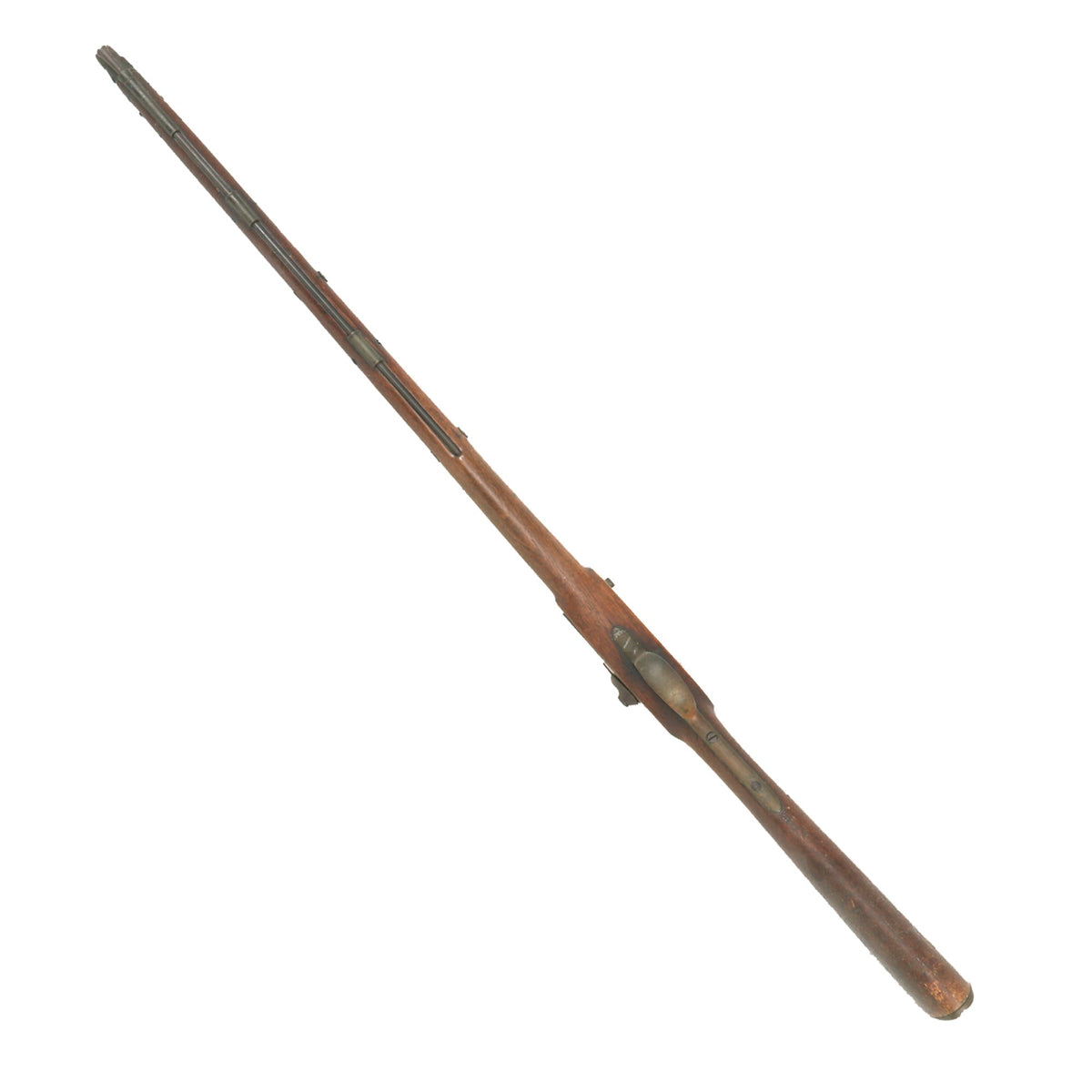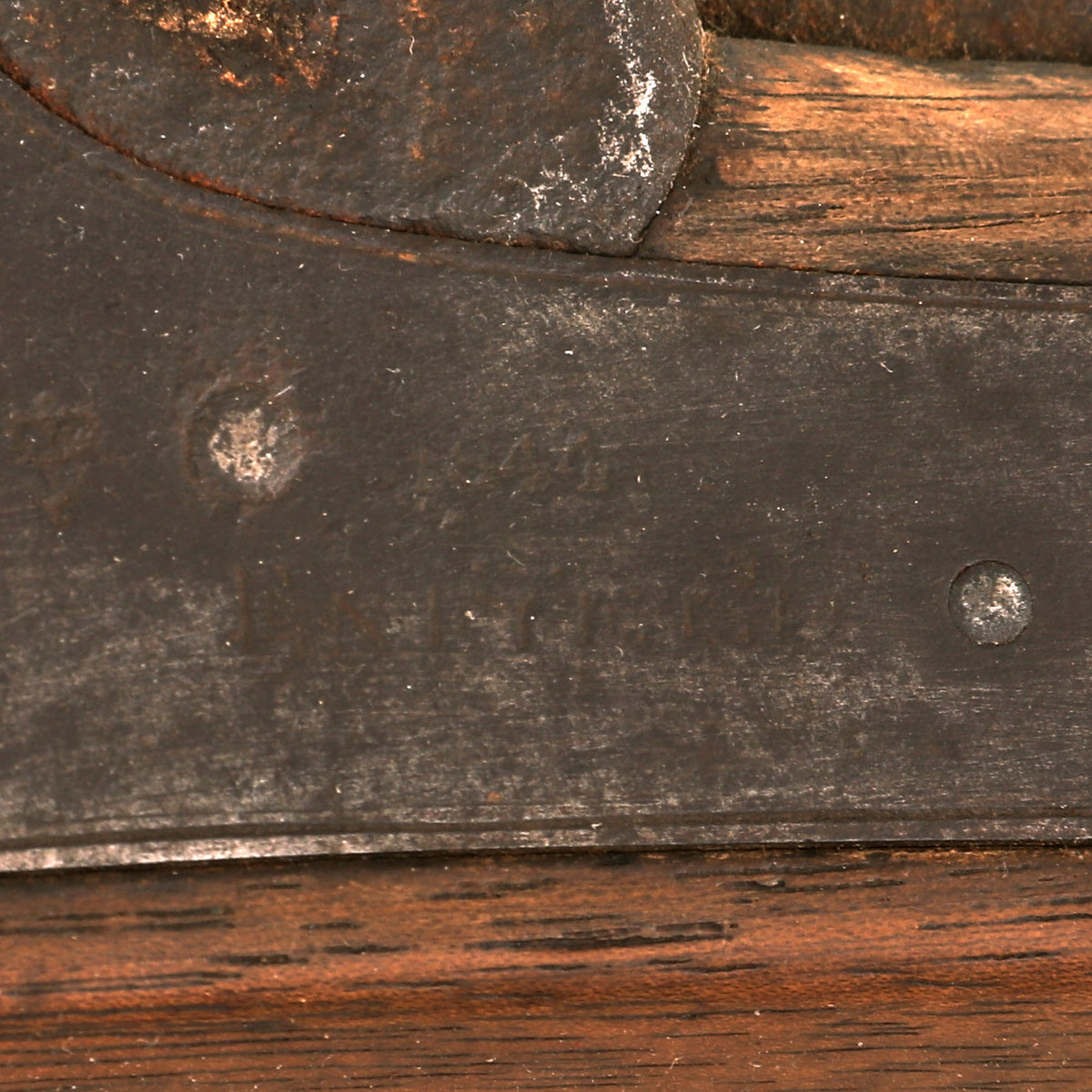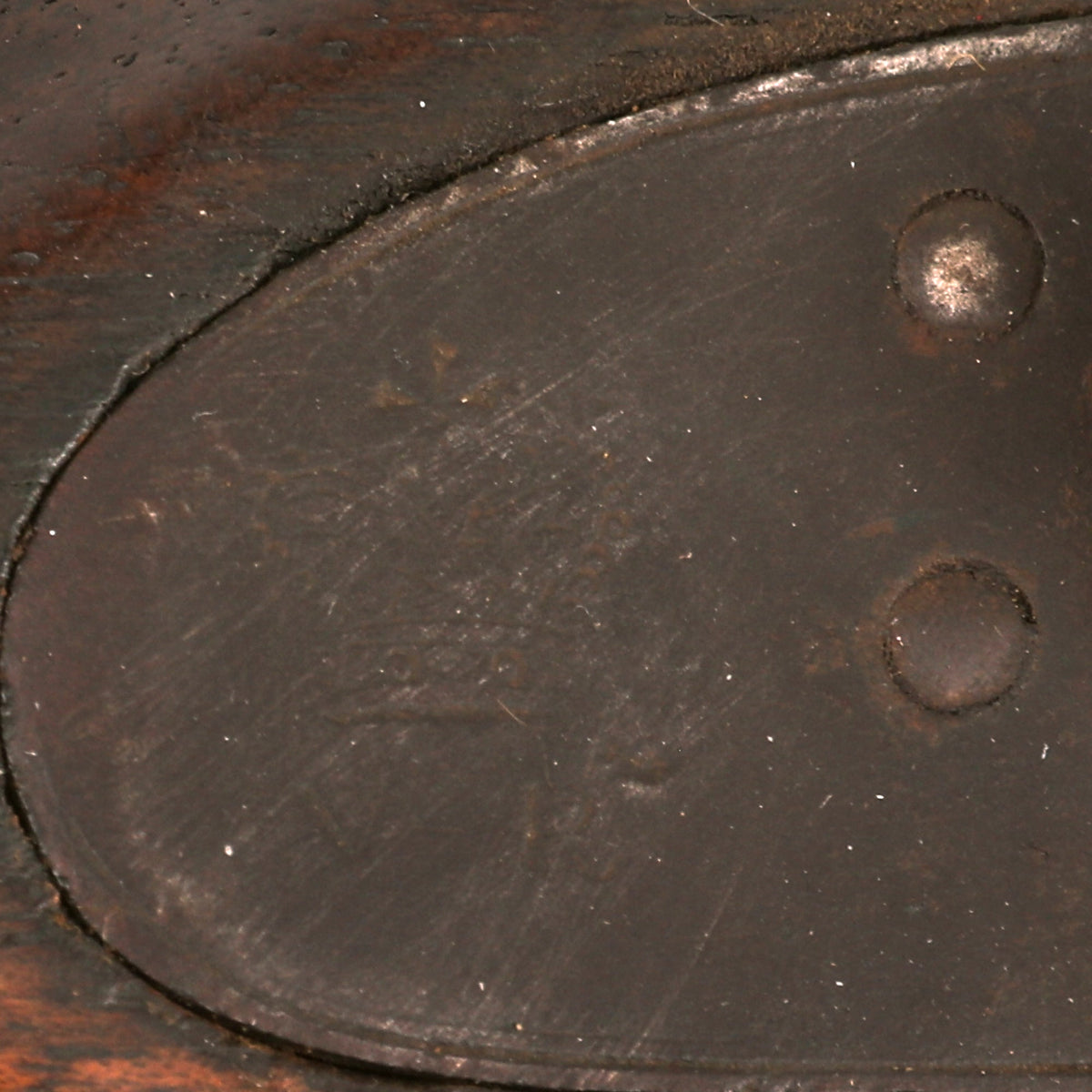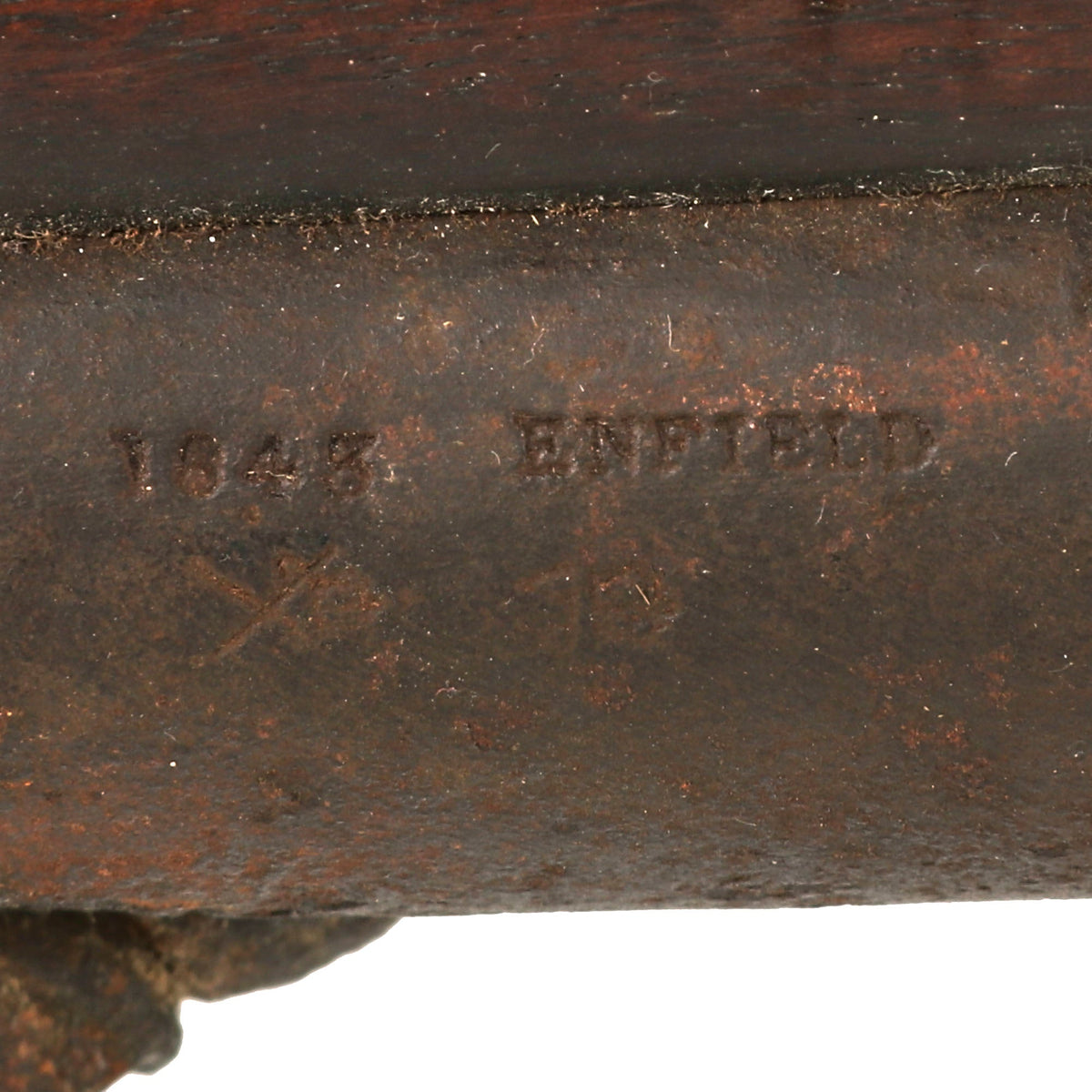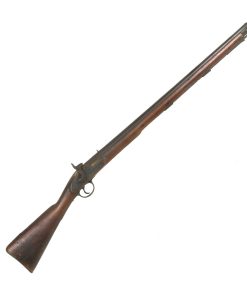Original British Lovell’s Pattern of 1842 Percussion Musket by Enfield Shortened to 48” – dated 1844 and 1843 Original Items
$ 1.395,00 $ 348,75
Original Item: Only One Available. This is something that we have only had a very few of over the years. The British Lovell’s Pattern of 1842 was the last smoothbore musket adopted by British Forces, and would be superseded in 1853 by the “3-Band Enfield” Pattern of 1853. Almost all of our examples of British Percussion Muskets were East India Company issued out of Nepal. However this is a genuine British Military Issued musket.
The P-1838 is among the most rare Brown Bess of all as it was superseded almost as soon as it was introduced. In 1839 the Percussion system was officially adopted and a vast conversion program was instituted to convert all Brown Bess Flintlock Muskets to this new ignition system. By 1841 the Tower of London, England’s greatest Arsenal, had over 280,000 newly converted Brown Bess muskets in its armories.
On October 30th 1841 there occurred “THE GREAT FIRE OF THE TOWER OF LONDON” and just about all of these freshly converted muskets were destroyed. As it happened, just three days before this tragic fire, a fresh model percussion musket had been approved and sealed. This new Musket became known as the Lovell’s Pattern Musket of 1842. At the time Lovell was the “Inspector of Small Arms,” a post he rose to in 1840, and the new style musket that bears his name is essentially none other than the East India Company Musket already in use by the East India Company for some years.
Once again the government copied private enterprise just as they had with the third model Brown Bess in 1796 that was known as the “India Pattern” and was copied from the East India Company Brown Bess musket adopted in 1771.
This example that we offer here is marked and dated 1844 / ENFIELD, for manufacture at the Royal Small Arms factory in the London Borough of Enfield. The lock plate tail is marked CROWN / V.R., meaning that this was a military production rifle, intended for British use, and it has the correct “Lock Viewer’s Mark”. The barrel is marked 1843 ENFIELD along with another CROWN / VR. It also bears a Birmingham proof mark, along with additional barrel proofs, which are somewhat faded. The hammer functions correctly and holds at both half cock and full cock.
The musket has been cut down roughly 6 ½ inches, with a barrel length of 32 ½”, and the front sling swivel hole has been plugged. These were originally 39 inches. There is an outlet in the nose cap for a bayonet lug, but it has been cut down. One of the ram rod holders has been moved back further. The stock is marked very faintly J. RAWLES on the left behind the action. B 13 is stamped into the buttstock on the right side, with the initials J.C.M. carved into the other side. The correct rear sight is still intact.
This musket saw heavy use, with a great deal of powder burn on the barrel nocks form and in the bore. The ram rod is still intact, but requires some force to take out. The condition is fair overall without any serious issues.
A very nice and rare Pattern 1842 Musket made at Enfield, later shortened by several inches. Ready to research and display!
Specifications-
Year of Manufacture: 1844
Caliber: about .71″
Cartridge Type: Ball and Powder
Barrel Length: Cut Down to 32½ inches, 39 Inches Originally
Overall Length: 48 Inches
Action type: Side Action Percussion Lock
Feed System: Muzzle Loading
NOTE: International orders of antique firearms MUST be shipped using UPS WW Services (courier). USPS Priority Mail international will not accept these. International customers should always consult their country’s antique gun laws prior to ordering.
Fast Shipping with Professional Packaging
Thanks to our longstanding association with UPS FedEx DHL, and other major international carriers, we are able to provide a range of shipping options. Our warehouse staff is expertly trained and will wrap your products according to our exact and precise specifications. Prior to shipping, your goods will be thoroughly examined and securely secured. We ship to thousands clients each day across multiple countries. This shows how we're dedicated to be the largest retailer on the internet. Warehouses and distribution centres can be located throughout Europe as well as the USA.
Note: Orders with more than one item will be assigned a processing date depending on the item.
Before shipping before shipping, we'll conduct a thorough inspection of the items you have ordered. Today, the majority of orders will be delivered within 48 hours. The delivery time will be between 3-7 days.
Returns
The stock is dynamic and we cannot completely manage it because multiple stakeholders are involved, including our factory and warehouse. So the actual stock may alter at any time. It's possible that you may not receive your order once the order has been made.
Our policy is valid for a period of 30 days. If you don't receive the product within 30 days, we are not able to issue a refund or an exchange.
You can only return an item if it is unused and in the same state as the day you received it. You must have the item in its original packaging.
Related products
Uncategorized
Uncategorized
Uncategorized
Uncategorized
Uncategorized
Uncategorized
Uncategorized
Uncategorized
Uncategorized
Uncategorized
Uncategorized
Uncategorized
Uncategorized
Uncategorized
Uncategorized
Armoured Fighting Vehicles of the World: AFVs of World War One (Hardcover Book) New Made Items
Uncategorized
Australian WWII Owen MK1 Machine Carbine SMG Custom Fabricated Replica with Sling Original Items
Uncategorized
Uncategorized
Uncategorized
Angolan Rebel 1970s era 60mm Inert Display Mortar from Angolan Civil War Original Items
